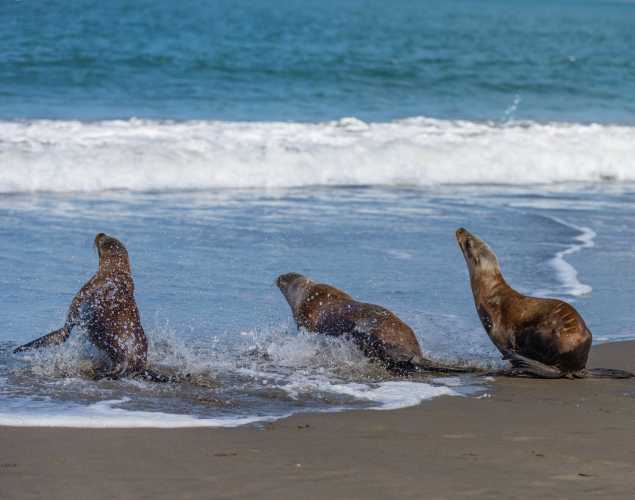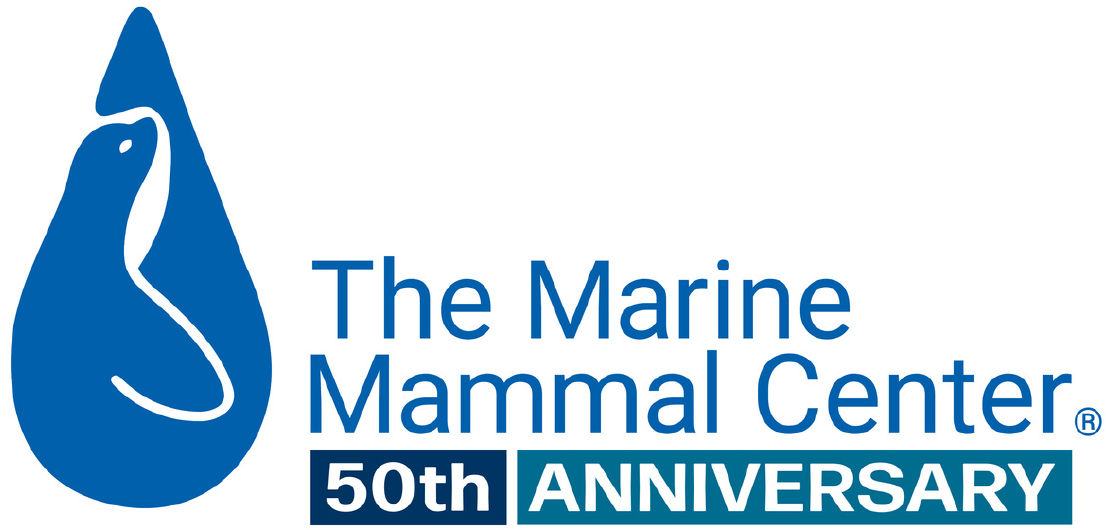
The Toxic Effects of Environmental Domoic Acid Exposure on Humans and Marine Wildlife
- Domoic acid
Abstract
Biotoxins produced by harmful algal blooms (HABs) are a substantial global threat to ocean and human health. Domoic acid (DA) is one such biotoxin whose negative impacts are forecasted to increase with climate change and coastal development. This manuscript serves as a review of DA toxicosis after environmental exposure in humans and wildlife, including an introduction to HAB toxins, the history of DA toxicosis, DA production, toxicokinetic properties of DA, susceptibility, clinical signs, DA detection methods and other diagnostic tests, time course of toxicosis, treatment, prognostics, and recommendations for future research. Additionally, we highlight the utility of California sea lions (CSLs; Zalophus californianus) as a model and sentinel of environmental DA exposure.
Krasner, A.E., Martinez, M.E., Field, C.L. and Fire, S.E., 2025. The Toxic Effects of Environmental Domoic Acid Exposure on Humans and Marine Wildlife. Marine Drugs, 23(2), p.61. https://doi.org/10.3390/md23020061. Open access. Published January 29, 2025.
Meet The Experts
{"image":"\/People\/Portrait\/maggie-martinez.jpg","alt":"Maggie Martinez","title":"Maggie Martinez","text":"Associate Director, Veterinary Pathology","link_url":"https:\/\/www.marinemammalcenter.org\/person\/maggie-martinez","link_text":"Read Bio"}

Related Publications
{"image":"\/Animals\/Patients\/California sea lions\/2020\/csl-oso-by-bill-hunnewell-c-the-marine-mammal-center-1.jpg","alt":"California sea lion","title":"Loss of Neuron Connectors in the Brains of Sea Lions with Epilepsy","link_url":"https:\/\/www.marinemammalcenter.org\/publications\/loss-of-neuron-connectors-in-the-brains-of-sea-lions-with-epilepsy","label":"Research Paper"}

{"image":"\/Animals\/Wild\/California sea lion\/cropped-images\/sea-lion-pup-shutterstock-451-142-3018-2358-1603915228.jpg","alt":"California sea lion pup","title":"Domoic Acid in Fetal Fluids of California Sea Lions","link_url":"https:\/\/www.marinemammalcenter.org\/publications\/domoic-acid-in-fetal-fluids-of-california-sea-lions","label":"Research Paper"}

{"image":"\/Animals\/Patients\/California sea lions\/cropped-images\/csl-by-bill-hunnewell-c-the-marine-mammal-center-2-0-1031-1794-1401-1603916128.jpg","alt":"California sea lion","title":"Evaluating Sense of Smell in California Sea Lions and Relevance to Domoic Acid","link_url":"https:\/\/www.marinemammalcenter.org\/publications\/evaluating-sense-of-smell-in-california-sea-lions-and-relevance-to-domoic-acid","label":"Research Paper"}

Evaluating Sense of Smell in California Sea Lions and Relevance to Domoic Acid
Read More{"image":"\/Animals\/Wild\/Steller sea lion\/cropped-images\/steller-sea-lion-harem-shutterstock-648-0-4424-3456-1603916879.jpg","alt":"Group of Steller sea lions","title":"Algal Toxins in Alaskan Marine Mammals Foraging in a Changing Environment","link_url":"https:\/\/www.marinemammalcenter.org\/publications\/algal-toxins-in-alaskan-marine-mammals-foraging-in-a-changing-environment","label":"Research Paper"}

Related News
{"image":"\/Animals\/Wild\/California sea lion\/cropped-images\/csl-release-4-5-24photo-by-chris-deimler-c-the-marine-mammal-center-138-0-1270-992-1745348188.jpg","alt":"Four young California sea lions walk on the beach toward the ocean.","title":"Achievements in Ocean Health","link_url":"https:\/\/www.marinemammalcenter.org\/news\/achievements-in-ocean-health","label":"News Update","date":"2025-04-23 10:20:00"}

{"image":"\/Animals\/Patients\/California sea lions\/cropped-images\/LA Times Front Page 8.13.24-340-15-1270-992-1723588213.png","alt":"LA Times Front Page Domoic Acid Sea Lions","title":"LA Times: Neurotoxin is Poisoning Large Numbers of Sea Lions","link_url":"https:\/\/www.marinemammalcenter.org\/news\/la-times-neurotoxin-is-poisoning-large-numbers-of-sea-lions","label":"In the News","date":"2024-08-13 02:00:00"}

{"image":"\/Animals\/Patients\/California sea lions\/2024\/cropped-images\/musty - csl - bill hunnewell-180-0-1270-992-1723649438.jpg","alt":"California sea lion being treated for domoic acid poisoning","title":"NBC Nightly News: Researchers Investigate Dozens of Sick Sea Lions Along California Coast","link_url":"https:\/\/www.marinemammalcenter.org\/news\/nbc-nightly-news-researchers-investigate-dozens-of-sick-sea-lions-along-california-coast","label":"In the News","date":"2024-08-13 02:00:00"}

NBC Nightly News: Researchers Investigate Dozens of Sick Sea Lions Along California Coast
August 13, 2024
Read More{"image":"\/Animals\/Patients\/Releases\/cropped-images\/csl-quly-left-and-togozees-release-by-bill-hunnewell-c-the-marine-mammal-center-90-0-3996-3122-1693421090.jpg","alt":"two California sea lions are released in front of a crowd of people","title":"NPR Morning Edition: Hundreds of Seals and Sea Lions Are Treated Each Year at The Marine Mammal Center","link_url":"https:\/\/www.marinemammalcenter.org\/news\/npr-morning-edition-hundreds-of-seals-and-sea-lions-are-treated-each-year-at-the-marine-mammal-center","label":"In the News","date":"2023-08-18 02:00:00"}

NPR Morning Edition: Hundreds of Seals and Sea Lions Are Treated Each Year at The Marine Mammal Center
August 18, 2023
Read More
